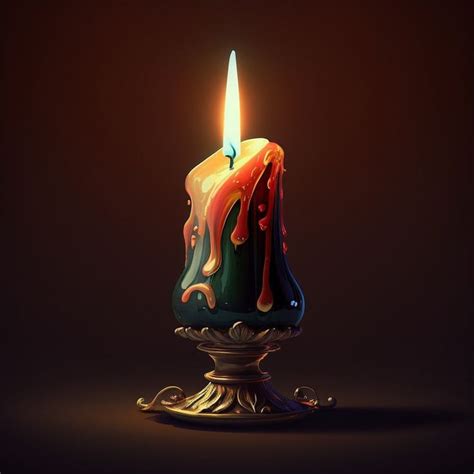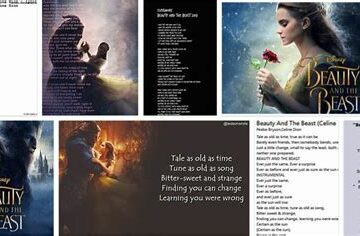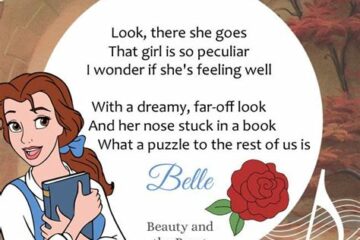How Beauty And The Beast Reflects Societal Values And Norms

How Beauty And The Beast Reflects Societal Values And Norms
Understanding How Beauty Defines Societal Standards
The concept of beauty has long been intertwined with societal standards, influencing perceptions and expectations across cultures. In the context of how beauty is defined, various factors come into play, including historical, cultural, and social elements that shape the prevailing notions of attractiveness. These cultural interpretations can often dictate behavior and establish norms, leading to the formation of stereotypes about individuals based on their appearance.
In Beauty and the Beast, these themes are presented through the contrasting characters of Belle and the Beast. Belle, with her traditional beauty, embodies societal ideals, while the Beast represents the harsh judgment and isolation that often accompany non-conformity. This dichotomy highlights a crucial point: that societal standards of beauty not only affect personal identity but also influence how individuals relate to each other.
Moreover, how beauty is perceived can change over time. Trends in fashion, media representations, and even technological advancements in cosmetic products all contribute to evolving definitions of beauty. The story emphasizes that adherence to these shifting standards can lead to superficial judgments, often ignoring deeper qualities that define moral character and true attractiveness.
This critical lens allows us to reflect on the message of the narrative—true beauty transcends appearance and is rooted in one’s actions and kindness. It suggests a shift away from rigid societal standards toward a broader understanding of beauty that encompasses both external appearance and internal virtues.
The Transformation Journey: How Beauty Affects Perception
The story of Beauty and the Beast is rich with symbolism surrounding how beauty influences perception. This transformative narrative not only centers around the literal change of the Beast into a handsome prince, but also encapsulates a broader commentary on societal standards of attraction and acceptance. The initial representation of the Beast—a figure embodying fear and ugliness—appears to be a culmination of societal biases regarding physical appearance. As Belle begins to see beyond his external features, the narrative challenges the stereotype that beauty is inherently linked to goodness.
Through her interactions with the Beast, Belle’s perception shifts dramatically. Her initial fear gradually transforms into understanding and compassion, demonstrating that how beauty is perceived can deeply influence relationships and emotional connections. This journey reflects a critical turning point where the audience is invited to reconsider what constitutes true beauty. The message here signals that inner qualities, such as kindness, courage, and love, are far more significant than outer appearances.
Moreover, the story highlights the perilous journey society often takes when equating beauty with worthiness. In numerous instances, characters who prioritize outer beauty over inner virtues face dire consequences. Such portrayals serve as cautionary tales that remind viewers to look deeper, suggesting that how beauty is often misinterpreted in real-life encounters. The transformative journey of Belle and the Beast is a step towards breaking these societal norms, pushing audiences to reflect on their perceptions of beauty in their own lives.
Exploring Themes: How Beauty Relates to Inner Goodness
In the narrative of Beauty and the Beast, one of the most compelling themes revolves around the concept of how beauty transcends mere physical appearance and relates deeply to inner goodness. The story challenges the traditional notion that beauty is skin-deep by showcasing characters whose true worth and value are revealed through their actions and intentions rather than their outward looks.
The character of Belle epitomizes this theme. While she is deemed beautiful by society’s standards, it is her intelligence, kindness, and courage that define her. In contrast, the Beast, with his fearsome exterior, illustrates how initial perceptions can be misleading. As the story unfolds, the audience discovers that his true nature is kind and benevolent, overshadowed by a past marked by his superficial judgment of others.
This juxtaposition prompts a critical examination of how beauty is often mistakenly equated with virtue. The film invites viewers to look beyond external appearances and consider the qualities that genuinely define a person’s character. In this sense, Beauty and the Beast serves as a reminder that inner goodness is a far more substantial indicator of true beauty than the aesthetic qualities that society frequently upholds.
Furthermore, the narrative reinforces the idea that character transformation plays a crucial role in personal growth. The Beast’s journey to self-acceptance and redemption is intricately linked to his willingness to change and embrace love, thereby revealing his inner beauty. Through this transformative arc, the story suggests that how beauty is perceived can significantly alter one’s social standing and the relationships they foster.
Beauty and the Beast asserts that true beauty lies in one’s actions, integrity, and capacity for love. By challenging societal values that prioritize outer beauty, the tale encourages a deeper understanding of what it means to be truly beautiful, thus reinforcing the importance of inner goodness as a fundamental value in society.
Cultural Reflections: How Beauty And The Beast Illustrates Norms
In the enchanting tale of How Beauty and the Beast, cultural norms surrounding beauty are not merely a backdrop but a pivotal element that drives the narrative. The characters, particularly Belle and the Beast, embody the societal standards and expectations tied to physical appearance and emotional depth, showcasing how these ideals impact individual identities and interpersonal relationships.
At its core, the story highlights the often rigid definitions of beauty that society imposes, demonstrating how they can lead to isolation or acceptance. Belle, celebrated for her intellect and spirit, defies the traditional expectations of beauty by valuing inner qualities over physical appearances. This rebellion against societal norms reflects a cultural critique on how beauty is often synonymous with worth.
Conversely, the Beast’s transformation serves as a powerful metaphor for the struggles against societal perceptions. Initially judged by his monstrous exterior, his journey towards emotional growth signifies that true beauty is linked to kindness, bravery, and vulnerability. The narrative thus illustrates a crucial cultural norm: the recognition that real beauty transcends superficial attributes.
Furthermore, the supporting characters exemplify various societal roles and expectations, each contributing to the overarching theme of How Beauty can both unite and divide. For instance, Gaston, who epitomizes toxic masculinity, represents the danger of valuing physical appearance above all else. His character brings to light the absurdity of societal pressures related to beauty and masculinity, prompting viewers to question and challenge these norms.
Through the interplay of these characters and their journeys, How Beauty and the Beast acts as a mirror reflecting our cultural values and practices. It invites audiences to reconsider their perceptions of beauty and to embrace a more profound understanding of what it means to be beautiful—inside and out.
Lessons Learned: How Beauty Reinforces or Challenges Societal Values
In the narrative of How Beauty is perceived within Beauty and the Beast, we see a reflection of the societal values that both reinforce and challenge contemporary norms. The story presents a dichotomy; it reinforces traditional views of beauty as equating to goodness and virtue while simultaneously challenging these notions through the character of Belle, who values intellect and personality over physical appearance.
One of the key lessons learned is that societal adherence to beauty standards can shape individual destinies. Characters like Gaston epitomize the societal pressure to conform to a specific image of masculinity and beauty, often leading to toxic behavior when such ideals are challenged. Conversely, the Beast’s transformation into a more compassionate figure represents the notion that true beauty lies beneath the surface, a lesson that contradicts the prevalent belief that outer beauty should dictate worth.
Belle’s journey, therefore, encourages viewers to question and redefine their understanding of beauty and its impact on societal values. Rather than accepting the status quo, Beauty and the Beast advocates for a more comprehensive view of worth that includes intelligence, kindness, and courage. This progressive narrative invites audiences to reflect on their own perceptions of beauty and consider how these perceptions might be reshaped to foster a more inclusive and accepting society.
Moreover, the storytelling framework serves as a mirror, reflecting the evolution of societal norms regarding beauty. As modern audiences engage with the tale, they are prompted not only to reevaluate their beliefs about beauty but also to recognize the ways in which those beliefs contribute to societal pressures and expectations.
Top 10 Disney Characters You Didn’t Know About
December 30, 2024A Deep Dive Into Disney Princesses And Their Stories
December 29, 2024The Meaning Behind Beauty And Beast Lyrics
December 29, 2024Why Beauty And The Beast Is A Timeless Disney Classic
December 29, 2024The Role Of Disney Princesses In Modern Culture
December 29, 2024Exploring The Themes In Beauty And The Beast Lyrics
December 28, 2024
Leave a reply Cancel reply
Recommended
-
Famous Disney Characters And Their Inspirations
December 23, 2024 -
Beauty And The Beast Mrs Potts Lyrics
August 23, 2023 -
Stevie Nicks Beauty And The Beast Lyrics
August 21, 2023









